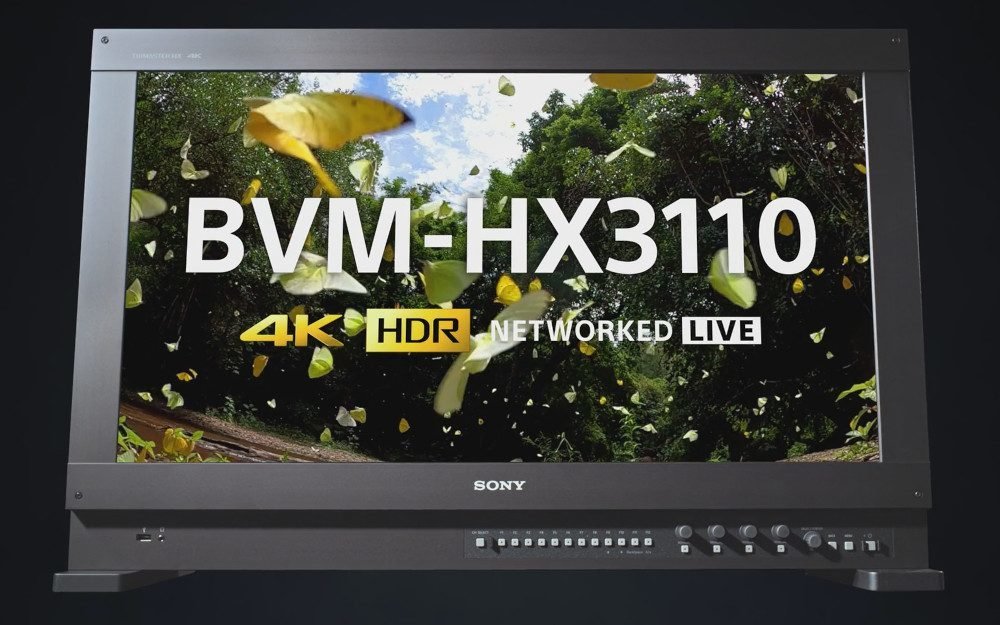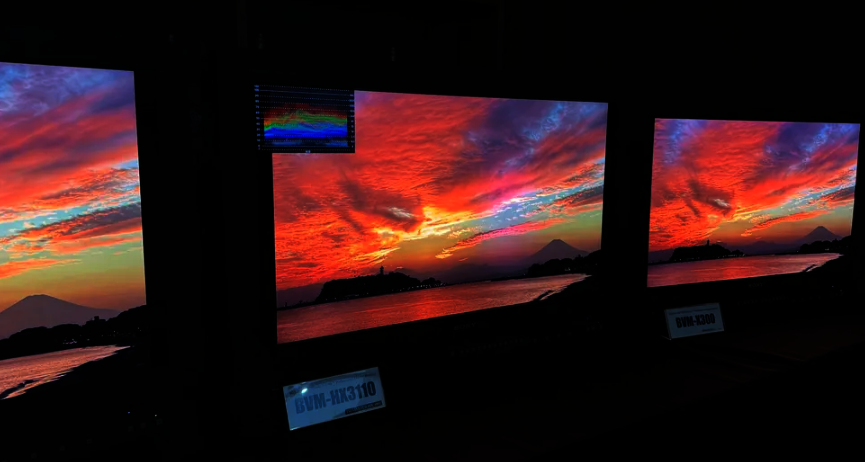Sony has begun shipping its professional-grade BVM-HX3110 mastering monitor to the first batch of production studios and other video creatives, and they are surely in for a real treat. The BVM-HX3110 delivers such an impressive performance boost over earlier models that many analysts believe it may well transform the content mastering landscape and even impact consumer’s TV buying decisions.

The Sony BVM-HX3110 is the successor to popular earlier models made by the company, such as the LCD-based BVM-HX310 and OLED BVM-HX300. Unlike the HX300, the 30.5-inch HX3110 is equipped with a true 4K dual LED panel and features local dimming. It’s a premium LCD display, with one LED layer serving to ramp up the brightness while the second layer is responsible for the colour, resulting in superior contrast control compared to traditional, single-panel LCD TVs
All told, Sony says the HX3110 offers five key improvements over the HX310 LCD monitor, introduced in response to feedback from content creators and mastering studios. They include more brightness, faster pixel response, wider viewing angles, more suppression of reflections and a new IP interface.
The key improvement is the extra brightness, which has been ramped up from 1,000 nits on the HX310 to an extraordinary 4,000 nits on the newer model - four-times brighter.
The Impact of Brightness
More brightness can equate to a game-changer for content mastering. Nits are the standard measure of brightness in the display industry, equivalent to the amount of light delivered by one candle per square metre. Whereas cheap LCD TV might be able to hit around 300 to 400 nits, a standard OLED can go up to 800 - 1,000 nits, while an MLA or QD-OLED TV can attain almost 2,000 nits, and a high-end Mini-LED can reach over 3,000 nits.
However, while all these numbers are true, they can only be achieved in a very small segment of the picture on screen, and can only be maintained for a short period of time.
The Sony BVM-HX3110 mastering monitor, meanwhile, is capable of producing 4,000 nits in a 10% window, and it can do so more or less indefinitely, the company claims. This is achieved through its use of a dual-layer LCD panel, an advanced number of local dimming zones and extreme power draw compared to consumer LCD TVs, along with a cooling system to keep everything chill.
Sony demonstrated the advantages of the improved brightness in a media briefing, where it showcased the BVM-HX3110 alongside the older BVM-HX31 and the OLED-based BVM-X300. On each display, a window that consisted of concentric rectangles of brightness was shown, displaying the full range each model was capable of. With each rectangle, the brightness increased as it moved towards the middle, with the centre being the brightest at the full 4,000 nits.

The Sony BVM-HX3100 displayed each rectangle perfectly, whereas the older models could only show the outer rectangles before they hit their peak brightness, the result being that the centre steps were blended into a larger, uniform box. This was true not only for the white window, but also for other windows demonstrating various colours.
In the real world, where scenes are too bright, this would appear on most consumer TVs as blown-out highlights with no detail visible. So instead of seeing the various shapes within a bright cloud, you’d see a flat, undetailed white shape.
To display highlights that have been mastered beyond their brightness limitations, most displays use a technique known as tone mapping, reducing the intensity of the highlights so they can preserve the details, while reducing the brightness lower than what the creator intended.
Will Creators Go For It?
If creators are to start routinely mastering their content at 4,000 nits, the gap between the creator’s intent and what most consumers see will become much larger, and the TV will need to work harder to showcase both the impact and highlight details of the content. This could therefore have implications for those movie lovers who want to watch content in the most faithful way possible. There’s a strong prospect it could lead to a resurgence in LCD TVs instead of OLED, especially as TV brands such as Hisense are now focused on ramping LCD brightness up to extraordinary new heights.
That said, it remains to be seen how many content creators will respond to the arrival of the Sony BVM-HX3110 and start mastering content at 4,000 nits as a matter of routine. Many have had access to 1,000-nit mastering monitor for years already, but a majority continue to master movies and shows at much lower levels of brightness.
It’s likely that most content creators won’t embrace 4,000 nits so quickly, but Sony clearly believes it can entice a significant number of them to give it a go. And once the rest of the industry sees the benefits, more may decide to follow suit.
If and when that happens, it will be interesting to see how TV makers responde. Will LCD-based Mini-LED TVs overhaul OLED as the movie aficionado’s technology of choice, or will OLED TVs be able to ramp up their own brightness to a comparable degree. Or alternatively, perhaps the much-touted MicroLED display technology may finally reduce in cost enough to become a viable option for more consumers.